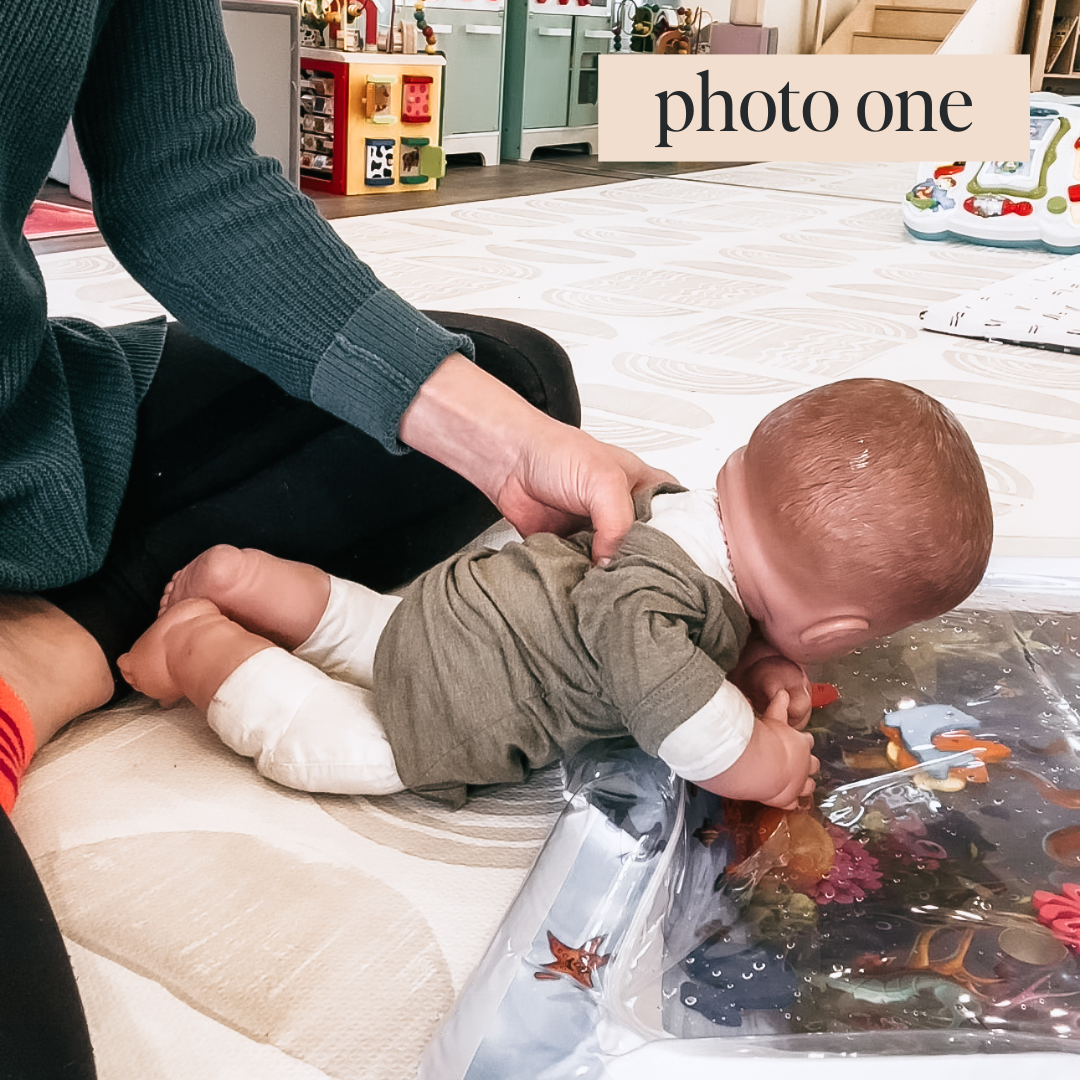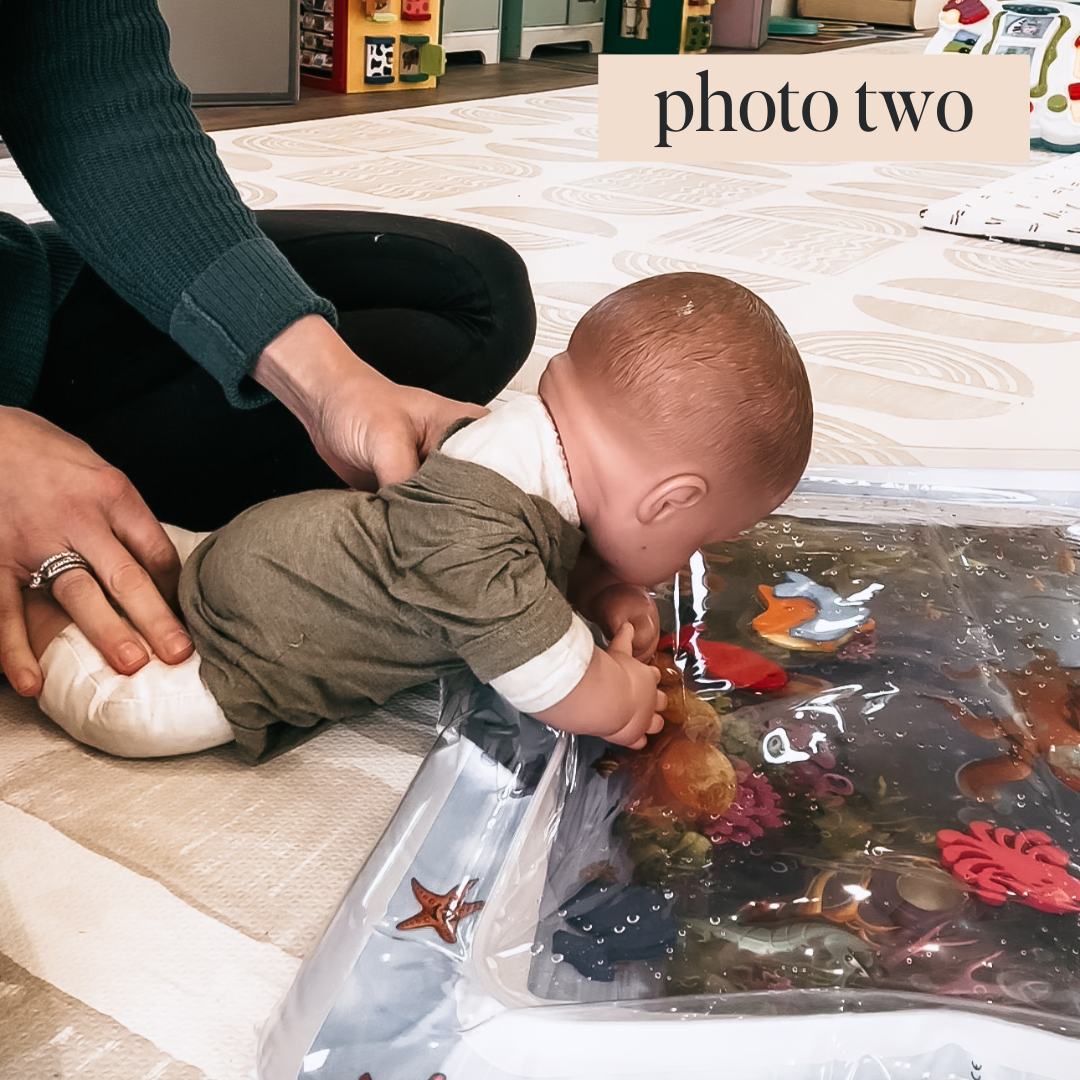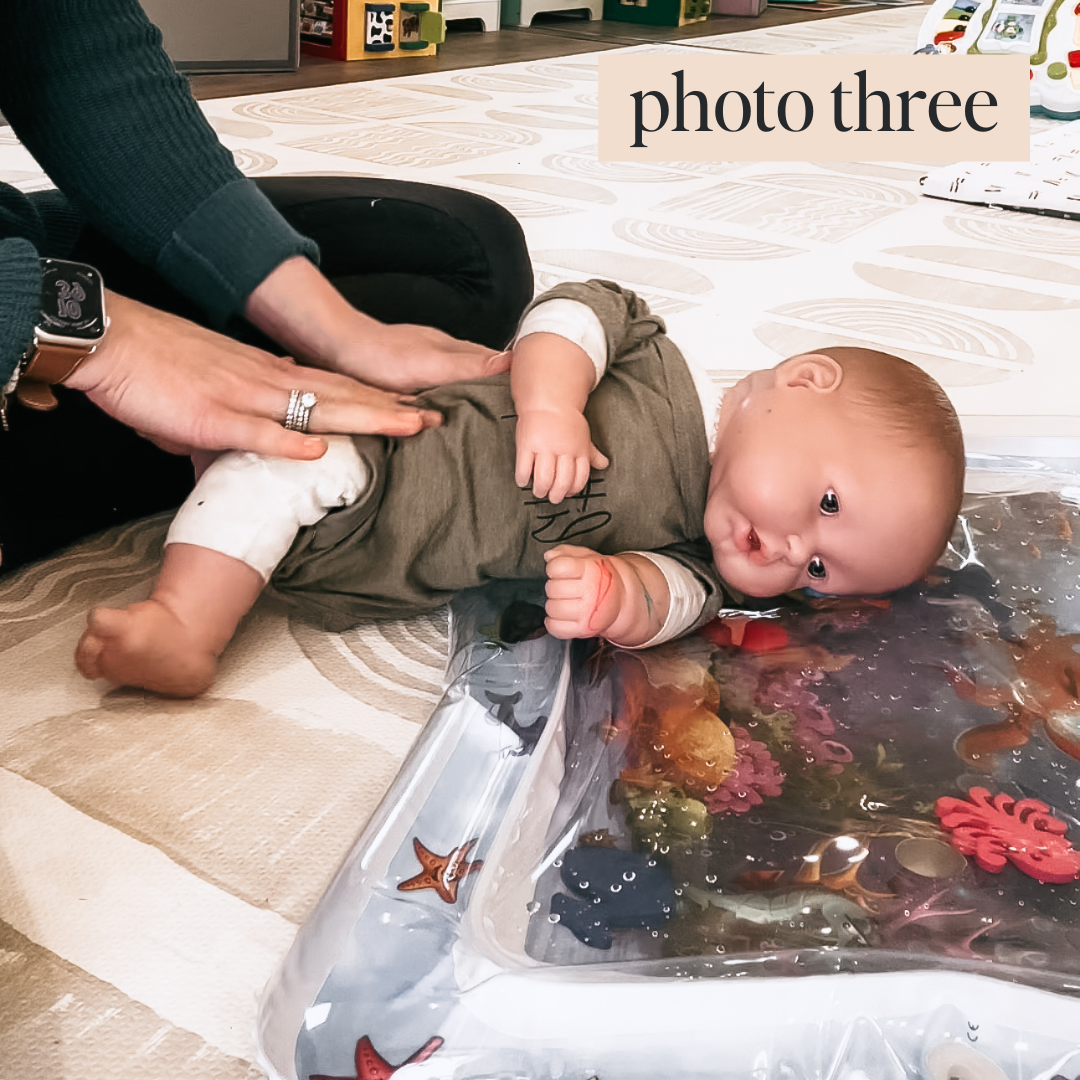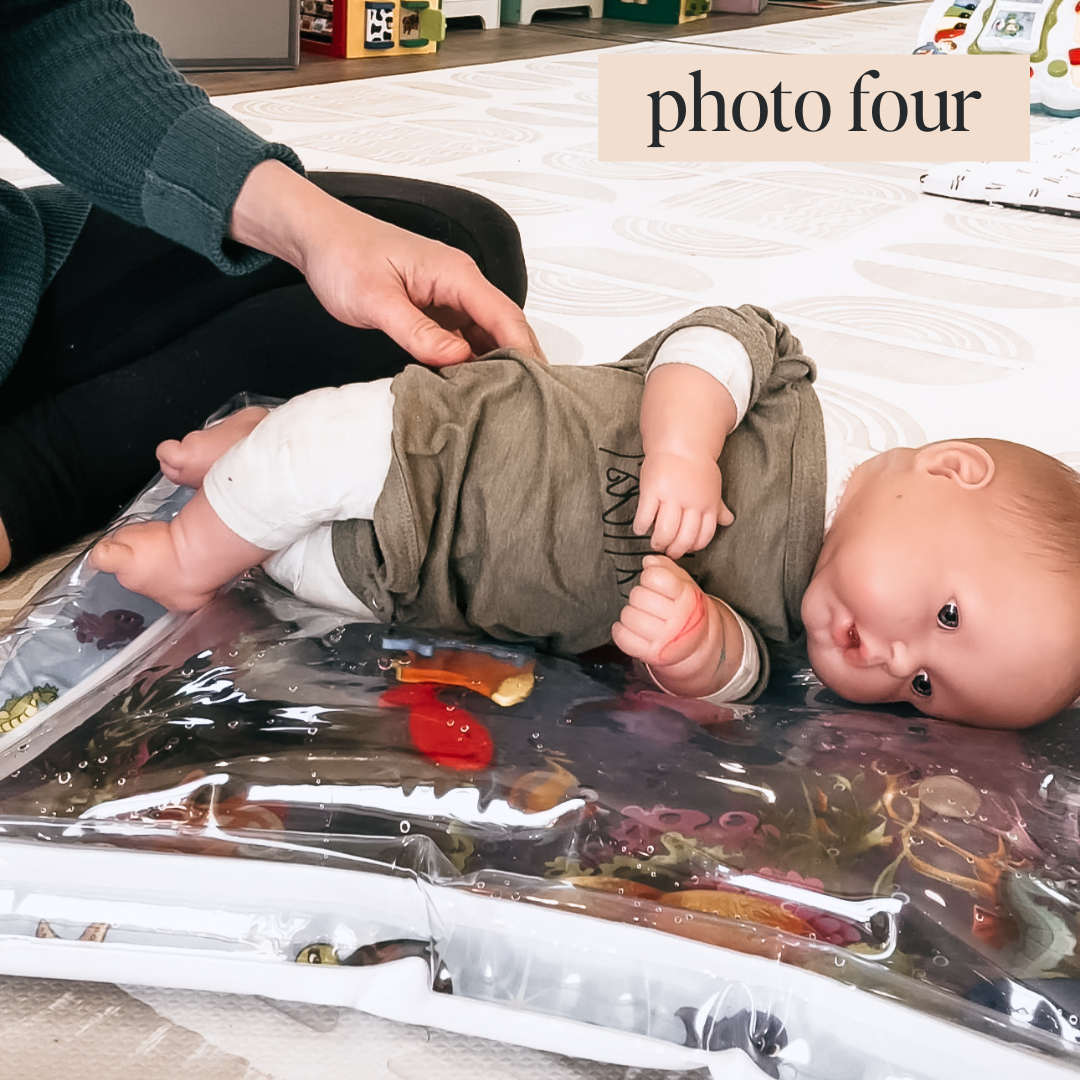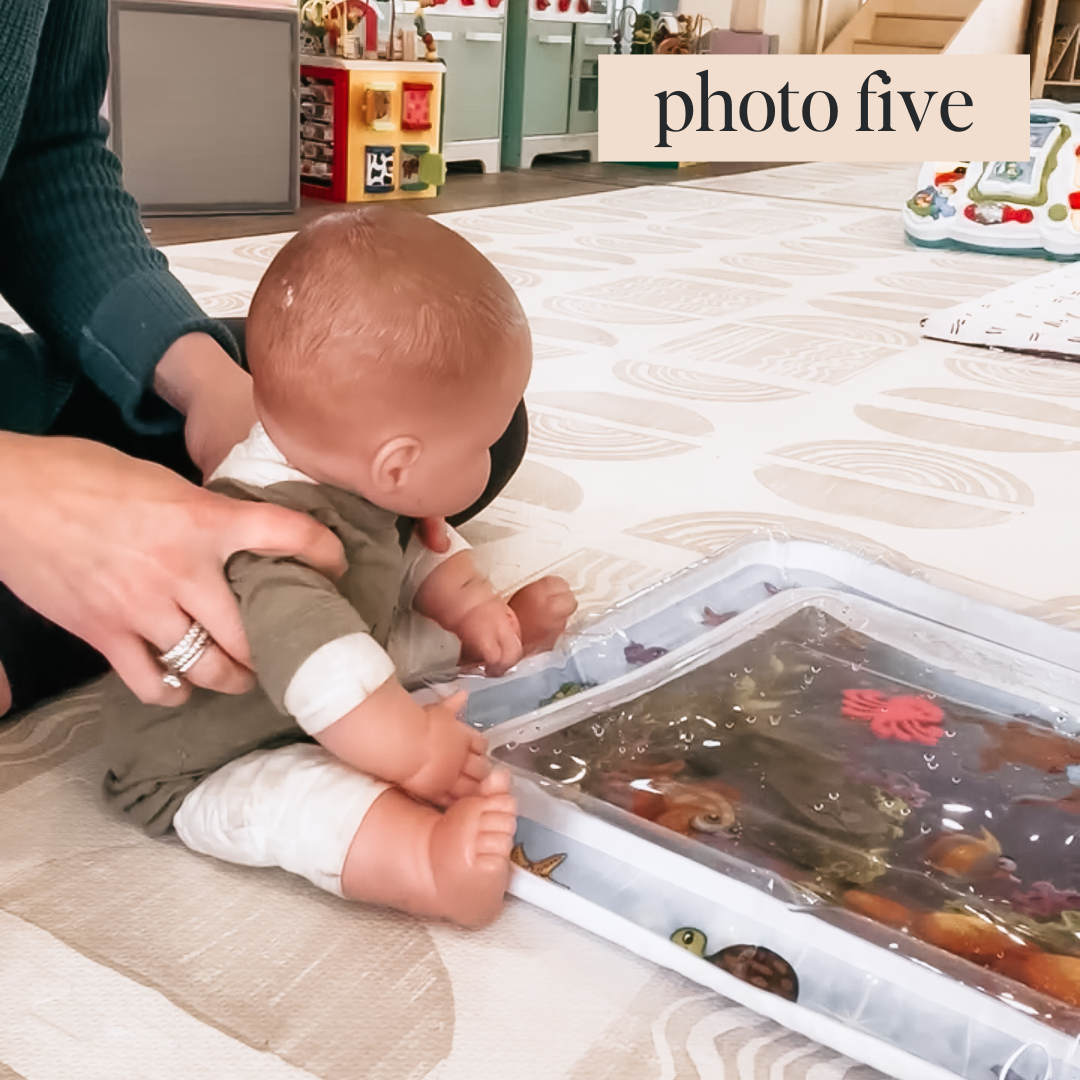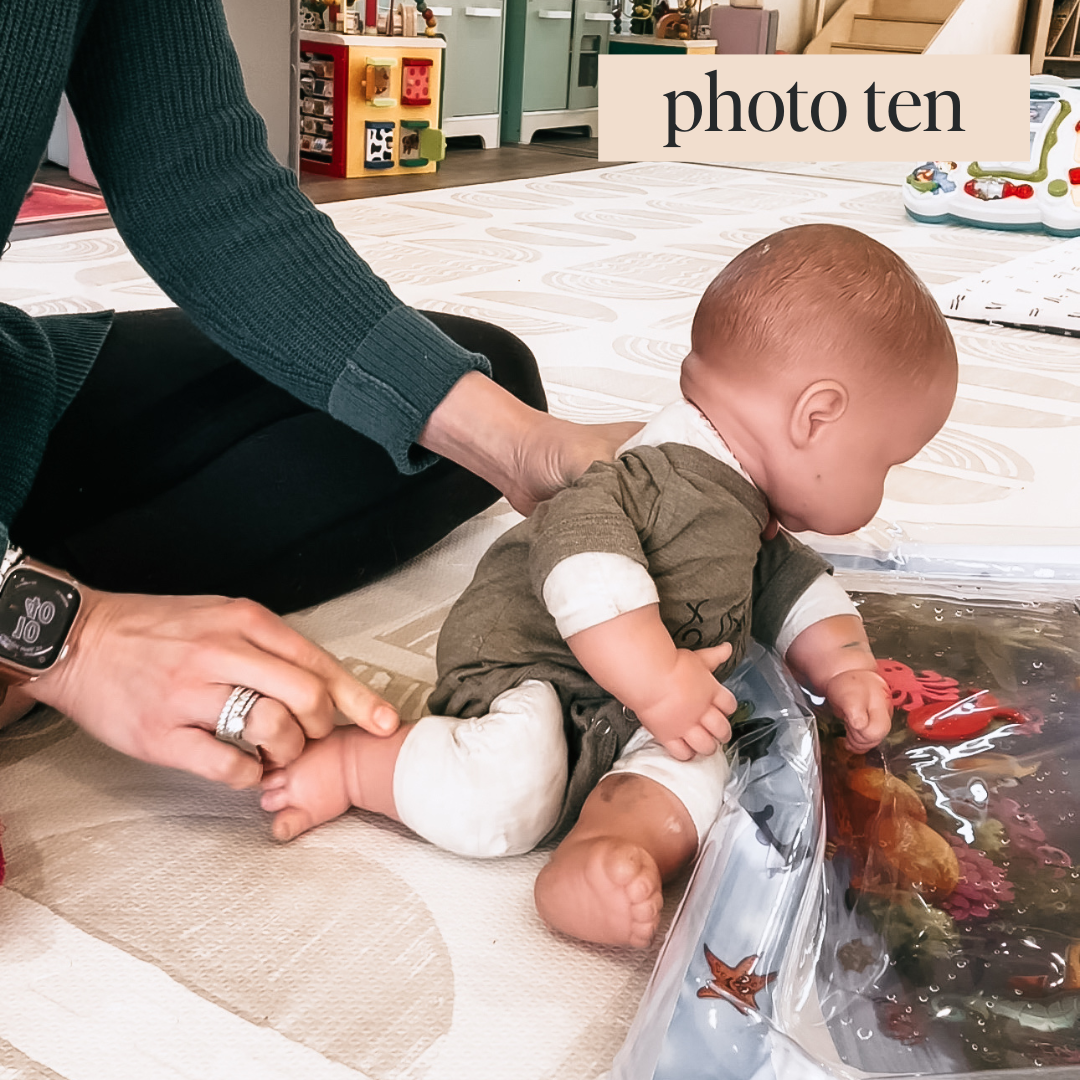Using A Water Mat For Tummy Time
THIS POST MAY CONTAIN AFFILIATE LINKS, WHICH MEANS I MAY EARN A SMALL COMMISSION AT NO EXTRA COST TO YOU, IF YOU MAKE A PURCHASE THROUGH ONE OF MY LINKS. I ONLY SHARE PRODUCTS I TRULY LOVE AND USE FOR MYSELF OR WITH MY OWN KIDS AND PATIENTS. THANK YOU FOR SUPPORTING THIS SPACE!
“How do you actually use a tummy time water mat? Are they worth the hype?”
If you have a little one in the tummy time stage, you might be wondering if tummy time water mats are really worth the hype - do they actually make tummy time more enjoyable? Do they target any other milestones or skills? Let’s talk about it!
As a pediatric physical therapist, tummy time water mats are honestly one of my favorite toys to use as a floor time tool - and you can actually use them for LOTS more than just tummy time - from sitting to rolling to crawling prep, post walking play & lots more skill practicing fun!
DISCLAIMER: Never leave your baby or child unattended while using the tummy time water mat or practicing any of the activities below.
Tummy Time Fun
The truth is - tummy time is SO, so important (to read tons more on the importance of tummy time, check this blog out) - but it is HARD work for our little ones - it’s the first time they’re beginning to move their body, strengthen their muscles, stretch out from that sweet little newborn curl, and starting to lay the foundation for all the next super exciting milestones to come.
And while tummy time can absolutely be a challenge, it doesn’t have to be! There are SO many ways to modify tummy time, support progress in belly down time, and keep the experience overall positive for both you AND your sweet baby - so let’s dig in!
First & foremost, tummy time water mats can be a great addition to tummy time because they’re entertaining!
With little items floating inside, as baby moves & engages with the mat, they help tap into sensory systems, vision development, and give baby something to focus on and take their mind off the challenge of tummy time. As vision develops and they’re able to more successfully track the items as they move, you’re now ALSO tapping into hand eye coordination development as they try to touch them as they move around.
And even better, there are lots of mat options that are high contrast (black/white/red), which is amazing for engaging vision in the early weeks & months!
Water Mats Promote Weight Shifting
Another thing I love about tummy time water mats is that depending on how much you fill them, you can really hone in on encouraging weight shifting- which is a huge component of many milestones including rolling, crawling & sitting.
AND, for early tummy time, depending on how much you fill it, you can even achieve some added support for that in utero positioning where legs are still slightly bent as shown in photo one above. This allows them to settle on their belly & play more comfortably without such a significant stretch to their legs.
To encourage weight shifting during water mat use, check out photo two - the magic happens here because unlike regular floor mats, water mats aren’t just stationary. Instead, as they move, the water moves as well, redistributing their weight and helping create natural shifting. Add in some intentional toy placement to encourage them to lift one hand & reach, and you can ramp that up even more! To check out a full list of LOTS of my favorite toys for tummy time that are not only FUN, but developmentally friendly, click here!
Alternating Positions & Helping Your Baby Roll
Beyond encouraging weight shifting and more active movement during play, tummy time water mats can also be great for use during sidelying play- as shown in photo three & four.
While tummy time gets a lot of attention in the early months, the truth is, there are other positions that are not only important (and beneficial!) for development, but can play a role in things like:
Reducing flat spot development on the skull
Improving flat spots when present
Supporting hands to mouth & midline (a HUGELY important milestone emerging around 3-4 months)
Supporting the development of head control
& more!
Those other positions include supported back play and sidelying on both the right and left sides. Using a tummy time water mat while baby is positioned in sidelying not only keeps it fun & entertaining, but again, supported weight shifting and specifically- the movement required to create a successful roll from their side to their belly.
But What About Once Baby Is Past the Tummy Time Stage??
Using A Water Mat Beyond Tummy Time
Promoting Sitting & Protective Reactions
Once the official tummy time stage is over, keep that water mat out because now we can use it for sitting!
When baby begins sitting around 6 months of age, using a water mat helps promote not only dynamic sitting, but also the development of sitting balance, protective reactions (photo 5), and even the ability to transition into and out of sitting independently.
To learn more about what milestones to expect & when, check out this blog.
Pro tip: If you have a little one that tends to fling backwards in sitting, try placing the water mat on the floor in front of them. Even better if they have their hands on it while leaned forward in a prop sit. This mat positioning below their eye level uses vision downwards, which encourages more flexion through their body. Aka, if they’re looking down, they’ll be more likely to stay leaned forward, avoiding that fling back!
In contrast, for littles that are falling or flopping forward in sitting, elevating the water mat above eye level can be helpful for encouraging more upright posture, as it uses vision (if available to them) to drive more extension through the spine. So cool, right?!
For water mat sitting play, you can also have them sit ON it, [photo six] which is SO fun for working sitting balance and protective reactions, which are how we learn to get hands out to protect ourselves from a fall out of sitting or standing. These reactions begin developing just a few weeks after baby starts to sit, and beyond stopping from a fall, play an important role in balance, safety, the development of independent transitions, and even the beginnings of crawling prep. Protective reactions Will first develop in a forward motion, then to the sides, and finally backwards, and having baby sitting on the water mat during play provides natural work on strengthening dynamic sitting balance and the development of those reactions as they move & explore.
Water Mats & Crawling - Encouraging Weight Shifting, Strengthening & Fun!
For pre-crawling water mat play, you can begin with them on hands on knees [photo seven] on top of it OR with just their hands on it. This gives them the opportunity to strengthen hips, shoulders & core, the 3 big muscle groups that have to be both strong AND coordinated in order to crawl on hands and knees.
You can also target the ability to get into and out of sitting independently, aka sit transitions [photo eight], AND THEN, If they begin reaching [photo nine], that weight shift is VERY similar to what's happening when they actually take off in crawling!
Fun for Big Kids Too!
And an added bonus - after getting these mats out recently to share in stories, even my kids (ages 6 years, 4.5 years and 2.5 years) have started having fun with them again! They thought they were so cool and were doing ‘dinosaur stomps’ on it, which unbeknownst to them promotes single leg stance (you can read more here if you want to know why this is so important) - AND my girls wanted to try using it under their hands when doing their gymnastics activities - so fun!
All in all, if you’re looking for a fun, engaging toy that provides a dynamic surface, lots of opportunities for play, and supports so many stages of development - you can’t go wrong with a tummy time water mat!
Want More?
For developmental questions, tips and guidance related to milestones about tummy time, rolling & sitting, crawling and walking, check out KC’s developmental Masterclasses linked here.
Was this helpful? Save it for later!

